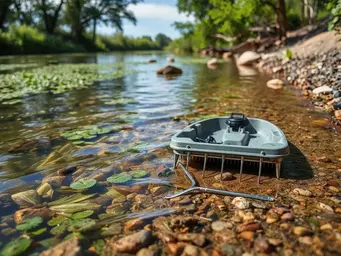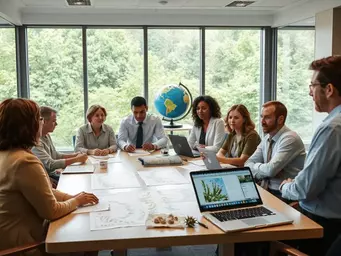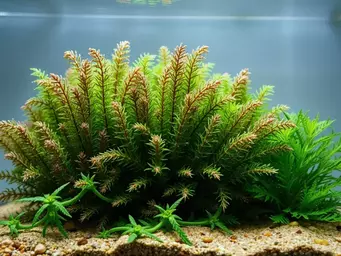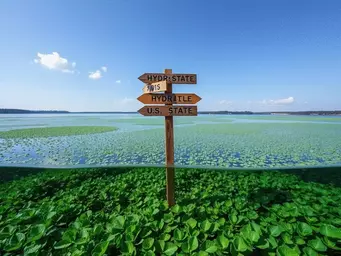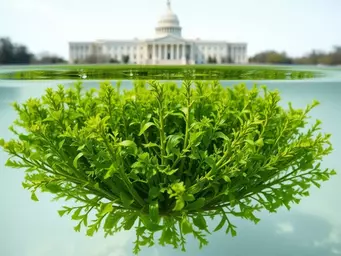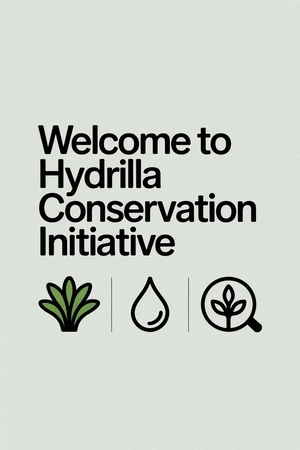Consider this: billions of dollars are spent annually to combat the invasion of non-native species that disrupt our ecosystems. As you delve into the complexities of invasive species management, you'll uncover a world where international cooperation is not just beneficial, but essential. What insights can you gather to aid in the fight against these ecological invaders?
What You Will Learn
- The ecological and economic impacts of invasive species on global ecosystems.
- Key international treaties such as the Ramsar Convention and the Convention on Biological Diversity (CBD) that address invasive species control.
- The necessity of global cooperation and information sharing for effective management strategies.
- Practical prevention strategies, including border controls and early detection protocols to mitigate risks.
- The role of partnerships, like the Global Invasive Species Programme (GISP), in enhancing collaborative efforts.
- Emerging challenges posed by climate change and globalization in the spread of invasive species.
- The importance of community initiatives and stakeholder involvement in invasive species management.

International Treaties for Invasive Species Control: A Framework for Collaboration
The fight against invasive species requires a multi-faceted approach, with international treaties playing a crucial role in fostering global cooperation and implementing effective prevention and management strategies. The visual below highlights key treaties and their focus areas.
Ramsar Convention
Focuses on wetland conservation, emphasizing measures to control invasive species disrupting these critical habitats.
Learn MoreConvention on Biological Diversity (CBD)
Promotes sustainable development through biodiversity conservation, urging nations to mitigate invasive species impacts.
Explore CBDBiosafety Protocol
Safeguards biodiversity from risks posed by Living Modified Organisms (LMOs), preventing inadvertent introductions.
Understand BiosafetyBallast Water Management Convention
Addresses unintentional introduction of aquatic invasive species via ship ballast water, setting treatment standards.
View ConventionInternational Plant Protection Convention (IPPC)
Sets international standards for preventing the spread of plant pests and diseases, safeguarding native plants.
Explore IPPCNavigating the Landscape of International Treaties for Invasive Species Control
Invasive species are plants, animals, or microorganisms that are introduced to a new environment and thrive at the expense of native species. They can disrupt ecosystems, damage economies, and even pose risks to human health. For instance, invasive aquatic plants like hydrilla can choke waterways, leading to diminished fish populations and degraded water quality. Understanding the complexities surrounding invasive species is crucial for effective management and conservation efforts.
At the Hydrilla Conservation Initiative, we recognize that combating the spread of non-native species requires both local knowledge and global cooperation. After all, the impacts of these invaders extend beyond borders, affecting ecosystems and communities worldwide. So, what can we do to address this pressing issue?
Understanding Invasive Species and Their Global Impact
- Ecological Disruption: Invasive species can outcompete native flora and fauna, leading to loss of biodiversity. The IUCN Red List provides extensive data on how invasive alien species impact global biodiversity, often driving declines in native populations.
- Economic Costs: The economic impact can be severe, with billions spent annually on control and management efforts.
- Human Health Risks: Some invasive species can pose direct threats to human health, such as through the spread of disease.
By recognizing these factors, we can better appreciate why international treaties addressing invasive species are so vital. They provide the framework necessary for countries to collaborate and share strategies effectively. Isn’t it fascinating how interconnected our efforts can be?
Key International Treaties Addressing Invasive Species
The Ramsar Convention: Protecting Wetlands
The Ramsar Convention focuses on the conservation of wetlands, which are critical habitats threatened by invasive species. This treaty outlines measures for managing wetlands and emphasizes the need for countries to control invasive species that may disrupt these ecosystems.
By protecting these natural habitats, the Ramsar Convention plays a significant role in maintaining the biodiversity that often suffers from invasive species. If you're interested in the health of your local wetlands, this treaty represents a step towards safeguarding them!
Convention on Biological Diversity (CBD)
The CBD aims to promote sustainable development through the conservation of biological diversity. In terms of invasive species, the CBD encourages nations to implement strategies that mitigate their impacts. This involves both preventive measures and the management of existing populations. The IPBES Invasive Alien Species Assessment highlights the critical role international agreements like the CBD play in addressing the global threat of invasive species.
By fostering a global commitment to preserving biodiversity, the CBD also emphasizes the sharing of knowledge and technology. This collaborative approach is essential as we work together to combat invasive threats!
Biosafety Protocol: Safeguarding Biodiversity
This protocol is designed to protect biological diversity from the potential risks posed by living modified organisms (LMOs). It provides guidelines for the safe transfer and handling of LMOs, ensuring that biotechnology does not inadvertently introduce invasive species into new environments.
Understanding the importance of biosafety is crucial for those of us working in conservation, as the potential for harm is significant. Have you considered how biotechnology could impact your local ecosystems?
International Maritime Organization’s Ballast Water Management Convention
This convention addresses the unintentional introduction of invasive species through ballast water from ships. By establishing standards for ballast water treatment and management, the convention aims to prevent these aquatic invaders from spreading across borders.
If you’ve ever wondered how shipping practices affect local ecosystems, this treaty provides crucial insights into managing those risks effectively!
International Plant Protection Convention (IPPC)
The IPPC sets international standards for preventing the spread of plant pests and diseases, including invasive species. By focusing on phytosanitary measures, the IPPC helps countries establish protocols for safeguarding their native plants.
Through these protective measures, we can ensure that trade and transport do not contribute to the further spread of invasive species. Collaboration is key in this fight!
Global and Regional Cooperation in Invasive Species Management
Collaborative efforts among nations are essential to effectively manage invasive species. By sharing information and resources, countries can implement strategies that are more likely to succeed. Have you ever been involved in a community initiative aimed at protecting local ecosystems?
Working together not only enhances our understanding of invasive species but also fosters a community focused on preservation. This is something we advocate for at the Hydrilla Conservation Initiative!
Partnerships with the Global Invasive Species Programme (GISP)
The Global Invasive Species Programme (GISP) serves as a vital platform for international cooperation and research. By facilitating partnerships among governments, researchers, and environmental organizations, GISP promotes effective management practices and the sharing of successful strategies.
As we collaborate with diverse stakeholders, the potential for impactful change increases. Isn’t it empowering to know that we are not alone in this effort?
Effective Prevention and Management Strategies
Border Controls and Phytosanitary Measures
Implementing robust border controls and phytosanitary measures is crucial for preventing the introduction of invasive species through trade and transport. These strategies often involve inspections, certifications, and monitoring of goods arriving from other regions.
By enforcing these measures, we can significantly reduce the risk of new invasions. What have you seen in your community regarding the enforcement of similar strategies?
Risk Assessment and Early Detection Protocols
Risk assessments help identify potential threats posed by invasive species, enabling proactive management. Early detection protocols allow for quick responses to new invasions, which is vital for minimizing their impact.
If we can identify and act on these threats early, we stand a better chance of preserving our ecosystems. Isn’t it heartening to think about the power of swift action?
Pro Tip
Did you know? Engaging in community awareness programs about invasive species can significantly enhance local efforts. By educating others on the identification and impact of invasive species, you can empower your community to take proactive measures in protecting ecosystems. Consider organizing workshops or collaborating with local conservation groups to spread the word!
Summary of Key Insights on International Treaties for Invasive Species Control
In our exploration of international treaties aimed at controlling invasive species, it’s clear that a comprehensive approach is essential. From understanding the definition of invasive species to the implications these organisms have on ecosystems, economies, and human health, we’ve covered a lot of ground. The treaties we discussed, such as the Ramsar Convention and the Convention on Biological Diversity (CBD), provide frameworks for nations to collaborate and implement effective management strategies.
In summary, here are the main insights we've gathered:
- The definition and impact of invasive species on our global ecosystems.
- Key international treaties that specifically address invasive species control.
- The importance of global and regional cooperation in managing these threats.
- Strategies for effective prevention and management, including risk assessments.
- Case studies showcasing successful treaty implementations.
- Challenges in compliance and enforcement mechanisms.
- Emerging issues, such as climate change and globalization, affecting invasive species spread.
- The vital role of stakeholders, including NGOs and community initiatives.
As someone deeply invested in environmental education and conservation through the Hydrilla Conservation Initiative, I believe that awareness and collaboration are key in this fight. By understanding these treaties and their implications, we can better support our ecosystems and work together towards effective solutions.
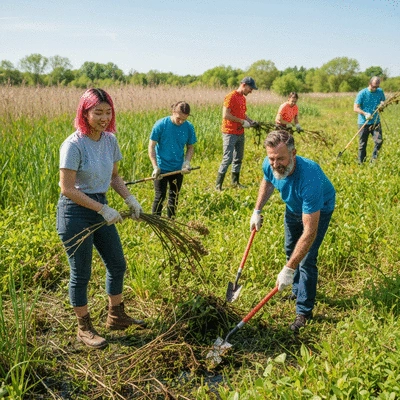
Frequently Asked Questions (FAQs)
- What are invasive species?
- Invasive species are plants, animals, or microorganisms introduced to a new environment where they thrive at the expense of native species, disrupting ecosystems, damaging economies, and posing health risks.
- Why are international treaties important for controlling invasive species?
- International treaties provide a framework for global cooperation, enabling countries to collaborate, share strategies, and implement effective prevention and management measures against invasive species, whose impacts often transcend national borders.
- Which key international treaties address invasive species control?
- Key treaties include the Ramsar Convention (for wetland conservation), the Convention on Biological Diversity (CBD) (for biodiversity conservation), the Biosafety Protocol (for LMOs), the Ballast Water Management Convention (for aquatic invasives from ships), and the International Plant Protection Convention (IPPC) (for plant pests and diseases).
- How do prevention strategies like border controls help?
- Border controls and phytosanitary measures involve inspections, certifications, and monitoring of goods to prevent the introduction of invasive species through trade and transport, significantly reducing the risk of new invasions.
- What role does climate change play in the spread of invasive species?
- Climate change and globalization are emerging issues that can exacerbate the spread of invasive species by altering habitats, creating new pathways for introduction, and enabling species to establish in previously unsuitable environments.
Engaging with the Global Community on Invasive Species Issues
Now that we’ve laid out the framework for understanding and addressing invasive species through international treaties, I encourage you to join the conversation! Engage with the global community by participating in forums, sharing your insights, and collaborating on management strategies. Every voice matters in this important dialogue.
If you're looking to make a difference, consider downloading our compliance checklists or joining initiatives focused on controlling invasive species. Your participation can have a significant impact on safeguarding our precious waterways and native ecosystems. What steps will you take today to contribute to this cause?
Recap of Key Points
Here is a quick recap of the important points discussed in the article:
- Invasive species can disrupt ecosystems, economies, and human health.
- International treaties like the Ramsar Convention and the CBD provide frameworks for global cooperation.
- Collaboration among nations enhances the effectiveness of invasive species management.
- Implementing robust border controls and early detection protocols is key to prevention.
- Stakeholders, including NGOs and community initiatives, play a vital role in combating invasive species.

